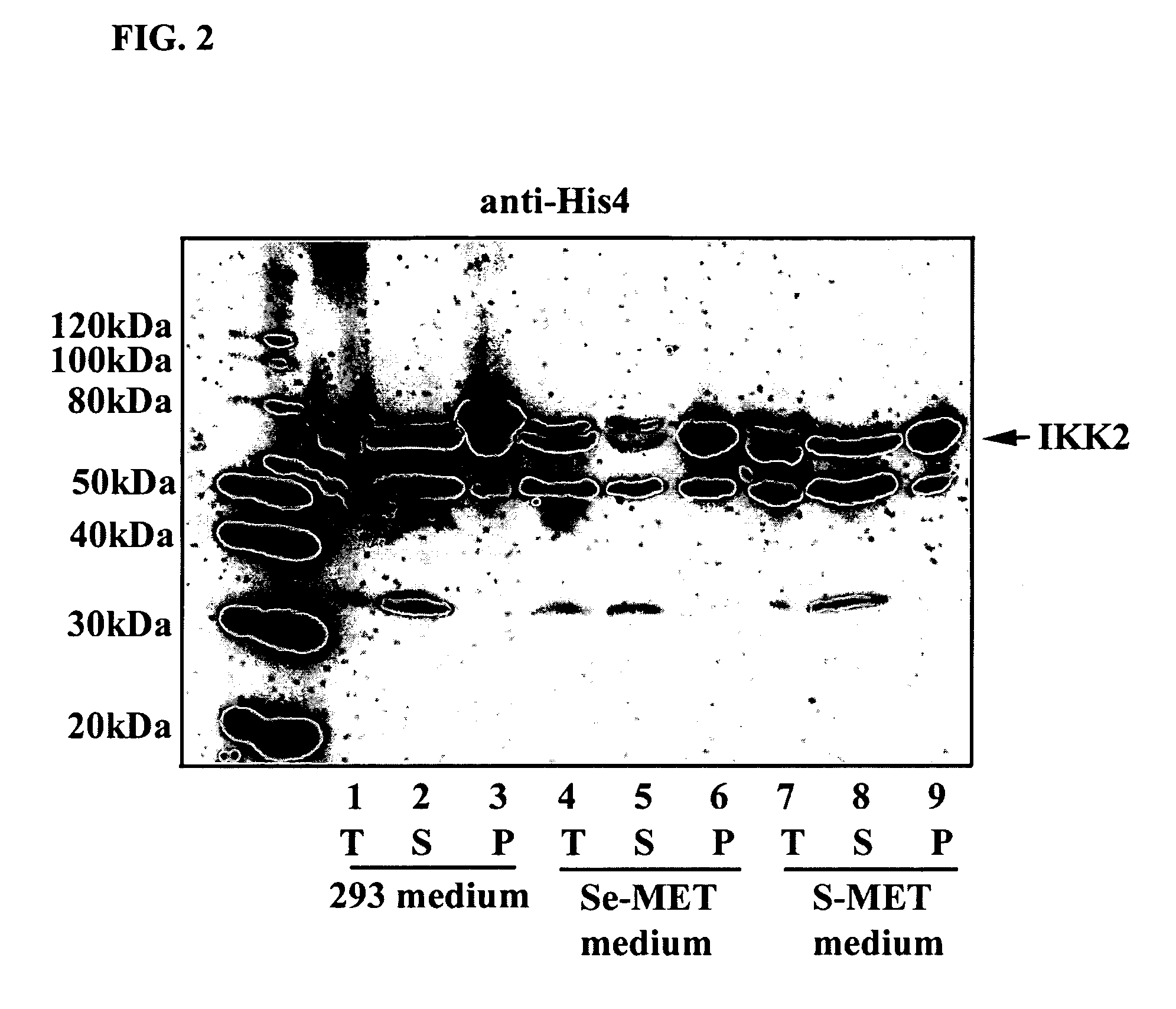Methods of labeling transiently expressed proteins in large-scale eukaryotic cell cultures
a transiently expressed protein and cell culture technology, applied in the field of methods of labeling proteins, can solve the problems of inability to scale, inhibit growth and/or loss of protein expression, and difficult to achieve rapid production of large quantities of labeled proteins
- Summary
- Abstract
- Description
- Claims
- Application Information
AI Technical Summary
Benefits of technology
Problems solved by technology
Method used
Image
Examples
example 1
Creation of Transiently Transfected HEK293 Cells Maintained as Large-Scale Spinner Cultures
example 1.1
[0072] Mammalian HEK293-EBNA cells were grown and maintained in a humidified incubator with 5% CO2 at 37° C. HEK293 cells were cultured in FREESTYLE™ 293 media (Invitrogen, Carlsbad, Calif.) (hereinafter “293 media”) supplemented with 5% fetal bovine serum (FBS).
example 1.2
Large-scale Transient Expression for Selenomethionine Labeling
[0073] Transient expression was performed in either 50 ml spinners or 1 L spinners. For 50 ml cultures, 25 μg of plasmid DNA (described below) was mixed with 400 μg of polyethylenimine [(PEI) 25 kDa, linear, neutralized to pH 7.0 by HCl (1 mg / ml), Polysciences (Warrington, Pa.)] in 2.5 ml of serum-free 293 media. For 1 L cultures, 500 μg of DNA was mixed with 4 mg of PEI in 50 ml of serum-free 293 media. The plasmid / PEI / medium aliquots were then combined in spinner flasks with either 50 ml or 1 L of HEK293 cells (1.5×106 cells / ml final culture volume) in 293 media supplemented with 5% FBS. After 24-48 hours, the transfection media was removed and the cells were washed once with PBS buffer prior to labeling. Cells were resuspended in the labeling media [methionine-free and cysteine-free DMEM (Invitrogen), 50 mg / L selenomethionine, 300 mg / L cysteine, 2 mM glutamine, 5% or 10% FBS] and incubated at 37° C. with a rotation ra...
PUM
| Property | Measurement | Unit |
|---|---|---|
| volume | aaaaa | aaaaa |
| volume | aaaaa | aaaaa |
| temperature | aaaaa | aaaaa |
Abstract
Description
Claims
Application Information
 Login to View More
Login to View More - R&D
- Intellectual Property
- Life Sciences
- Materials
- Tech Scout
- Unparalleled Data Quality
- Higher Quality Content
- 60% Fewer Hallucinations
Browse by: Latest US Patents, China's latest patents, Technical Efficacy Thesaurus, Application Domain, Technology Topic, Popular Technical Reports.
© 2025 PatSnap. All rights reserved.Legal|Privacy policy|Modern Slavery Act Transparency Statement|Sitemap|About US| Contact US: help@patsnap.com



